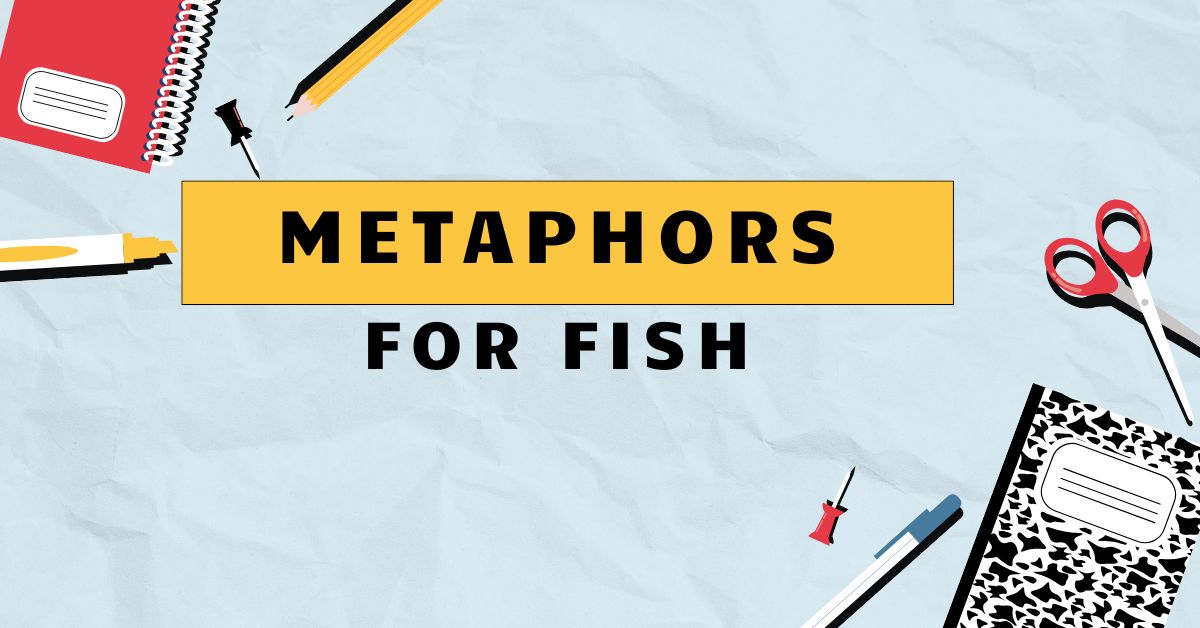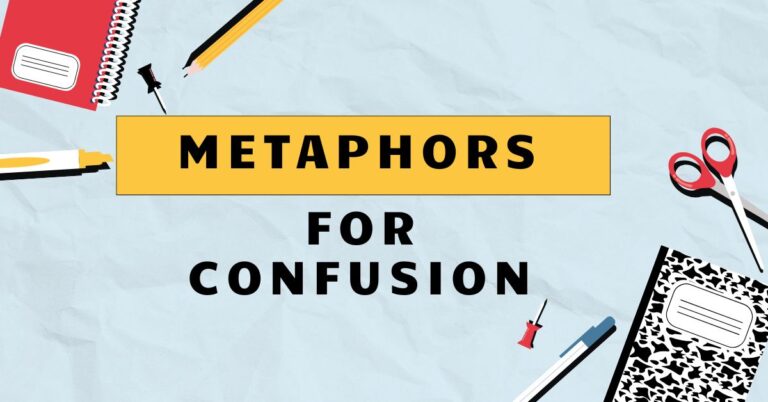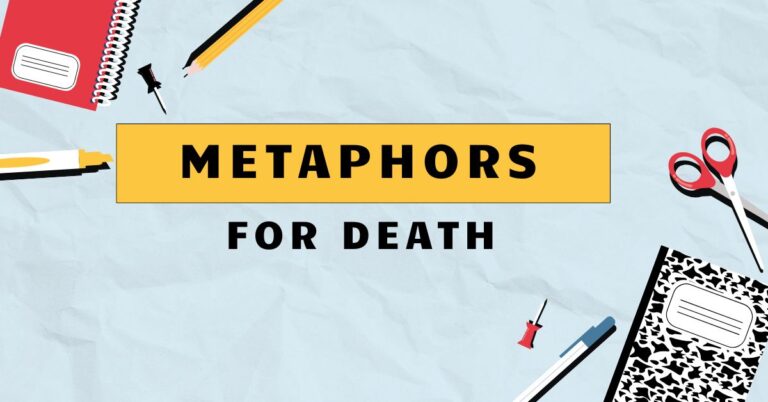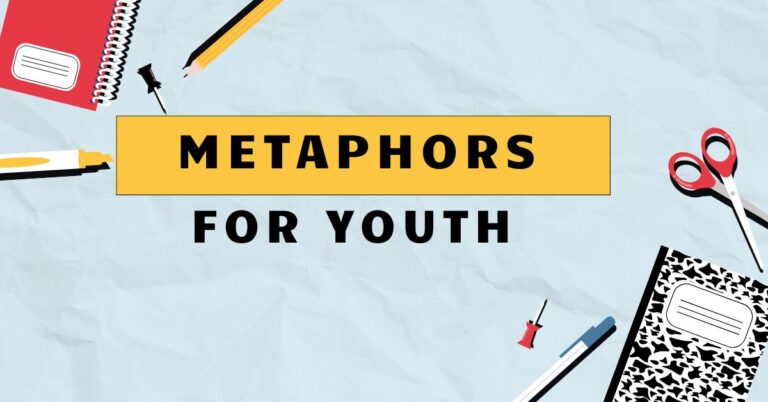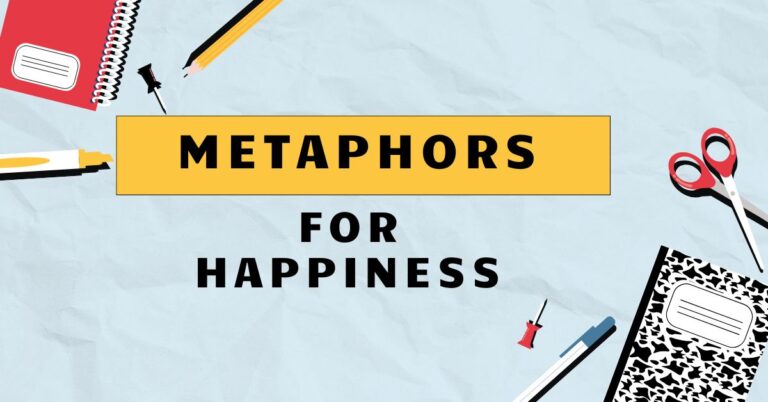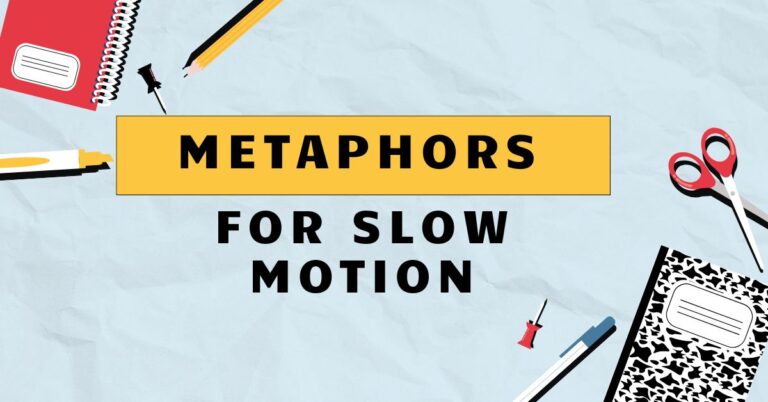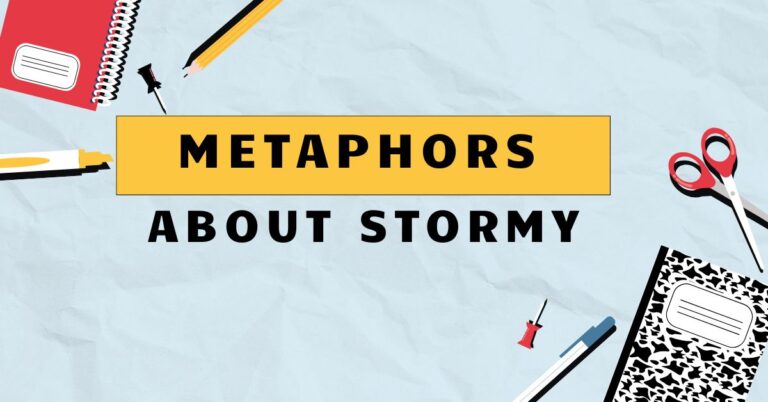33 Figurative Language: Mastering Metaphors for Fish
Metaphors add color and depth to our language, allowing us to express abstract ideas in relatable terms. Understanding metaphors, particularly those related to specific subjects like fish, enriches both our comprehension and creative expression.
This article delves into the fascinating world of metaphors for fish, exploring their various types, structures, and usage. Whether you’re a student, writer, or language enthusiast, this guide will equip you with the knowledge and skills to effectively use and interpret these evocative figures of speech.
Table of Contents
- Introduction
- Definition of Metaphor and its Application to Fish
- Structural Breakdown of Metaphors for Fish
- Types of Metaphors for Fish
- Examples of Metaphors for Fish
- Usage Rules for Metaphors for Fish
- Common Mistakes When Using Metaphors for Fish
- Practice Exercises
- Advanced Topics in Metaphors
- Frequently Asked Questions
- Conclusion
Definition of Metaphor and its Application to Fish
A metaphor is a figure of speech that directly compares two seemingly unrelated things, asserting that one thingisanother. This comparison is not literal but rather suggestive, highlighting shared qualities or characteristics to create a vivid image or deeper understanding.
Metaphors are essential tools in language, allowing us to express complex ideas in a concise and relatable manner. They differ from similes, which use “like” or “as” to make a comparison.
When applied to fish, metaphors can be used to describe various aspects of their behavior, environment, or symbolic significance. For example, a fish described as a “silver bullet” suggests speed and precision, while a fish called a “watery jewel” highlights its beauty and preciousness.
These metaphors move beyond literal descriptions, providing richer and more engaging imagery.
Structural Breakdown of Metaphors for Fish
The structure of a metaphor typically involves two key elements: thetenorand thevehicle. The tenor is the subject to which metaphorical attributes are ascribed (in this case, the fish).
The vehicle is the object or concept whose attributes are being borrowed to describe the tenor. Understanding this structure helps in both creating and interpreting metaphors.
For instance, in the phrase “He swam through the crowd like a fish through water,” the tenor is “he” (the person swimming), and the vehicle is “a fish through water.” The metaphor suggests the person’s ease and agility in navigating the crowd, drawing a parallel between human action and fish movement. The effectiveness of a metaphor depends on the clarity and relevance of the connection between the tenor and the vehicle.
Types of Metaphors for Fish
Metaphors for fish can be categorized based on the aspect of the fish they emphasize. Here are several common types:
Behavioral Metaphors
These metaphors focus on the actions, habits, or tendencies of fish. They often describe human behavior by comparing it to that of a fish.
These can be used to emphasize certain characteristics.
Environmental Metaphors
These metaphors relate the fish to its surroundings, either literally or figuratively. They might describe a person’s comfort level in a specific environment or situation, using the fish’s natural habitat as a reference.
They emphasize how fish interact with their environment.
Transformative Metaphors
These metaphors depict fish undergoing change or representing a state of transition. They can be used to describe personal growth, adaptation to new circumstances, or the evolution of an idea.
The fish’s journey or change is the core of this metaphor.
Symbolic Metaphors
These metaphors imbue fish with deeper meanings or represent abstract concepts. Fish can symbolize luck, abundance, freedom, or other cultural or personal values.
These are often associated with mythology or cultural beliefs. The metaphorical meaning goes far beyond the fish itself.
Examples of Metaphors for Fish
To illustrate the different types of metaphors for fish, here are several examples categorized by their focus.
Behavioral Metaphor Examples
The following table provides examples of behavioral metaphors, illustrating how fish behavior can be used to describe human actions or characteristics.
| Metaphor | Explanation |
|---|---|
| “He’s always swimming against the current.” | Describes someone who consistently opposes popular opinion or prevailing trends. |
| “She’s a little fish in a big pond.” | Describes someone who is new and inexperienced in a large and competitive environment. |
| “They’re just swimming in circles.” | Describes a situation where people are busy but not making any progress. |
| “He’s a bottom feeder.” | Describes someone who takes advantage of others or engages in unethical behavior. |
| “She schools with the best.” | Describes someone who associates with high-achieving or talented individuals. |
| “He’s a shark in a suit.” | Describes someone ruthless and predatory in business or personal dealings. |
| “She’s just fishing for compliments.” | Describes someone who is subtly seeking praise or admiration. |
| “He’s hooked on that idea.” | Describes someone who is completely captivated or obsessed with a particular concept. |
| “She’s floundering in her new role.” | Describes someone struggling and unsure in a new position or situation. |
| “He’s a cold fish.” | Describes someone who is unemotional and aloof. |
| “They’re like fish out of water.” | Describes people who are uncomfortable or out of place in a new environment. |
| “He’s a slippery fish.” | Describes someone who is evasive and difficult to catch or hold accountable. |
| “She’s always swimming upstream.” | Similar to “swimming against the current,” emphasizing constant struggle. |
| “He rose through the ranks like a salmon.” | Describes someone who overcomes obstacles to achieve success. |
| “She’s a guppy in a tank full of piranhas.” | Describes someone vulnerable and surrounded by dangerous individuals. |
| “He’s constantly baiting people.” | Describes someone provoking others into arguments or conflicts. |
| “She’s just drifting like seaweed.” | Describes someone lacking direction or purpose in life. |
| “He’s a whale among minnows.” | Describes someone powerful and influential among less significant individuals. |
| “She’s a bright, shimmering fish.” | Describes someone vibrant and captivating. |
| “He’s a lone wolf, a solitary fish.” | Describes someone who prefers to be alone and independent. |
| “She’s scaling new heights.” | Describes someone achieving significant progress and advancement. |
| “He’s navigating the waters of business.” | Describes someone dealing with the complexities of the business world. |
| “She’s swimming in a sea of opportunity.” | Describes someone surrounded by ample possibilities. |
| “He’s casting a wide net.” | Describes someone trying to reach a large audience or group. |
| “She’s a prized catch.” | Describes someone highly desirable or valuable. |
Environmental Metaphor Examples
The following table provides examples of environmental metaphors, illustrating how the fish’s environment can be used to describe human situations or feelings.
| Metaphor | Explanation |
|---|---|
| “He felt like a fish in a barrel.” | Describes a situation where someone is easily targeted or vulnerable. |
| “She’s swimming in debt.” | Describes someone who is deeply burdened by financial obligations. |
| “He was thrown into the deep end.” | Describes a situation where someone is given a challenging task with little preparation. |
| “She thrives in murky waters.” | Describes someone who excels in ambiguous or complicated situations. |
| “He’s navigating treacherous waters.” | Describes someone dealing with difficult or dangerous circumstances. |
| “She’s in a feeding frenzy.” | Describes a situation of intense competition or aggressive pursuit. |
| “He’s in over his head.” | Describes someone overwhelmed by a situation or task. |
| “She’s found her sea legs.” | Describes someone who has adapted to a new environment or situation. |
| “He’s stuck in a stagnant pond.” | Describes someone feeling trapped in an unfulfilling or unchanging situation. |
| “She’s riding the tide of success.” | Describes someone benefiting from favorable circumstances or opportunities. |
| “He’s drowning in paperwork.” | Describes someone overwhelmed by administrative tasks. |
| “She’s exploring uncharted waters.” | Describes someone venturing into unfamiliar or innovative territory. |
| “He’s in the swim of things.” | Describes someone actively involved and engaged in current events or activities. |
| “She’s a breath of fresh air in this stale environment.” | Describes someone bringing positive change to a dull or uninspiring setting. |
| “He’s lost at sea.” | Describes someone feeling confused, disoriented, or without direction. |
| “She’s a lighthouse in the storm.” | Describes someone providing guidance and support during difficult times. |
| “He’s a rock in the shifting sands.” | Describes someone providing stability and reliability in uncertain situations. |
| “She’s a beacon of hope.” | Describes someone inspiring optimism and positive expectations. |
| “He’s grounded.” | Describes someone stable and well-balanced. |
| “She’s anchored to her values.” | Describes someone firmly committed to their beliefs. |
| “He’s sailing smoothly.” | Describes someone progressing easily and successfully. |
| “She’s weathering the storm.” | Describes someone enduring a difficult period with resilience. |
| “He’s navigating the currents of change.” | Describes someone adapting to new developments and circumstances. |
| “She’s in deep water now.” | Describes someone facing serious trouble or challenges. |
| “He’s riding the wave.” | Describes someone taking advantage of a current trend or opportunity. |
Transformative Metaphor Examples
The following table provides examples of transformative metaphors, illustrating how fish can represent change, growth, or adaptation.
| Metaphor | Explanation |
|---|---|
| “He transformed from a guppy to a shark.” | Describes someone who grew from a small, insignificant figure to a powerful and influential one. |
| “She’s shedding her scales of insecurity.” | Describes someone overcoming self-doubt and gaining confidence. |
| “He’s evolving like a fish adapting to new depths.” | Describes someone growing and changing in response to new challenges or experiences. |
| “She’s molting her old skin.” | Describes someone changing their outer appearance. |
| “He’s leaping over hurdles.” | Describes someone overcoming obstacles to achieve success. |
| “She’s swimming into a brighter future.” | Describes someone moving towards a more positive and promising future. |
| “He’s rising to the surface.” | Describes someone becoming more prominent or successful. |
| “She’s turning over a new leaf.” | Describes someone making a fresh start or changing their behavior. |
| “He’s branching out.” | Describes someone exploring new interests or opportunities. |
| “She’s spreading her wings.” | Describes someone gaining independence and confidence. |
| “He’s coming out of his shell.” | Describes someone becoming more outgoing and sociable. |
| “She’s blossoming.” | Describes someone developing and thriving. |
| “He’s taking flight.” | Describes someone embarking on a new journey or venture. |
| “She’s finding her voice.” | Describes someone discovering their ability to express themselves. |
| “He’s breaking free from his chains.” | Describes someone overcoming limitations or restrictions. |
| “She’s reinventing herself.” | Describes someone making significant changes to their identity or lifestyle. |
| “He’s emerging from the depths.” | Describes someone overcoming a difficult period and becoming stronger. |
| “She’s climbing the ladder.” | Describes someone advancing in their career or social status. |
| “He’s finding his footing.” | Describes someone becoming stable and secure in a new situation. |
| “She’s growing stronger.” | Describes someone developing resilience and inner strength. |
Symbolic Metaphor Examples
The following table provides examples of symbolic metaphors, illustrating how fish can represent abstract concepts like luck, abundance, or freedom.
| Metaphor | Explanation |
|---|---|
| “He’s a symbol of hope in the community.” | Describes someone who inspires optimism and positive expectations. |
| “She’s a beacon of light.” | Describes someone providing guidance and support. |
| “He’s a pillar of strength.” | Describes someone providing unwavering support. |
| “She’s a guardian angel.” | Describes someone protecting and watching over others. |
| “He’s a guiding star.” | Describes someone providing direction and inspiration. |
| “She’s a breath of fresh air.” | Describes someone bringing positive change. |
| “He’s a ray of sunshine.” | Describes someone bringing joy and happiness. |
| “She’s a pot of gold.” | Describes someone highly valuable. |
| “He’s a silver lining.” | Describes someone who represents hope. |
| “She’s a lucky charm.” | Describes someone bringing good fortune. |
| “He’s a fountain of wisdom.” | Describes someone possessing great knowledge. |
| “She’s a wellspring of creativity.” | Describes someone inspiring artistic or innovative ideas. |
| “He’s a tower of strength.” | Describes someone providing unwavering support and resilience. |
| “She’s a bridge between cultures.” | Describes someone connecting different groups or communities. |
| “He’s a compass in the storm.” | Describes someone providing direction and guidance during difficult times. |
| “She’s a cornerstone of the community.” | Describes someone essential to the stability and success of a group. |
| “He’s a lifeline.” | Describes someone providing crucial support. |
| “She’s a second chance.” | Describes someone providing an opportunity for redemption. |
| “He’s a fresh start.” | Describes someone providing an opportunity for renewal. |
Usage Rules for Metaphors for Fish
Using metaphors effectively involves understanding certain guidelines. First, ensure the comparison is relevant and understandable.
A good metaphor should create a clear connection between the tenor and the vehicle. Second, avoid mixing metaphors, which can lead to confusion.
For example, combining “swimming against the current” with “barking up the wrong tree” creates a nonsensical image. Third, be mindful of cultural context.
Some metaphors may be more appropriate or meaningful in certain cultures than others.
Also, consider the audience. A complex or obscure metaphor might not resonate with all listeners or readers.
Aim for clarity and simplicity while still maintaining creativity. Overusing metaphors can also diminish their impact, so use them judiciously to enhance your writing or speech.
Common Mistakes When Using Metaphors for Fish
One common mistake is using clichéd metaphors that have lost their impact through overuse. Phrases like “like a fish out of water” can be effective but should be used sparingly.
Another mistake is creating metaphors that are too vague or abstract, making it difficult for the audience to grasp the intended meaning. Always ensure the connection between the fish and the concept is clear.
Incorrect: “His ideas were fishy trees.” (Unclear and illogical)
Correct: “His ideas were like rare, shimmering fish in a dark sea of conformity.” (Clearer and more evocative)
Avoid mixed metaphors:
Incorrect: “He was swimming against the tide while also keeping his eye on the ball.”
Correct: “He was swimming against the tide, battling the currents of opposition.”
Practice Exercises
Test your understanding of metaphors for fish with these exercises.
| Question | Answer |
|---|---|
| 1. What does it mean when someone says “He’s a big fish in a small pond”? | He’s an important or influential person in a limited environment. |
| 2. Create a metaphor using a “fish” to describe someone who is easily deceived. | He’s an easy catch, a gullible fish ready to bite any bait. |
| 3. What type of metaphor is “She’s swimming in success”? | Environmental Metaphor |
| 4. Complete the metaphor: “He’s as slippery as a ______.” | Fish |
| 5. What does it mean to say someone is “fishing for compliments”? | They are subtly seeking praise or admiration. |
| 6. Create a metaphor using “fish” to describe someone who is resilient. | She’s a salmon, fighting her way upstream against all odds. |
| 7. Identify the tenor and vehicle in the metaphor: “He’s a shark in the boardroom.” | Tenor: He; Vehicle: Shark |
| 8. What type of metaphor is “He transformed from a minnow to a whale”? | Transformative Metaphor |
| 9. What does it mean when someone says “She’s floundering”? Use a fish metaphor. | She’s like a fish out of water, struggling to adapt to her environment. |
| 10. Create a metaphor using a “fish” to describe a politician who is corrupt. | He’s a bottom-feeding fish, scavenging for scraps of power and wealth. |
Advanced Topics in Metaphors
For advanced learners, exploring the philosophical implications of metaphors can be enriching. Consider how metaphors shape our understanding of the world and influence our perceptions.
Investigate the role of cognitive linguistics in explaining how metaphors are processed in the brain. Delve into the use of extended metaphors, where a single metaphor is developed throughout an entire piece of writing.
Examine how different cultures use metaphors in unique ways, reflecting their values and beliefs.
Another advanced topic is the study of dead metaphors, which are metaphors that have become so common that they are no longer recognized as figurative language. Understanding how these metaphors evolved can provide insights into the dynamic nature of language.
Frequently Asked Questions
- What is the difference between a metaphor and a simile?
A metaphor directly equates two things (e.g., “He is a lion”), while a simile uses “like” or “as” to make a comparison (e.g., “He is like a lion”).
- How can I improve my ability to create effective metaphors?
Practice observing the world around you and identifying connections between seemingly unrelated things. Read widely to expose yourself to different styles of writing and figurative language. Experiment with different combinations of tenor and vehicle to find the most evocative and meaningful comparisons.
- What are some common pitfalls to avoid when using metaphors?
Avoid using clichéd metaphors, mixing metaphors, and creating metaphors that are too vague or abstract. Ensure the comparison is relevant, understandable, and appropriate for your audience.
- How do metaphors contribute to effective communication?
Metaphors enhance communication by making abstract ideas more concrete, creating vivid imagery, and adding emotional resonance. They can also make complex concepts more accessible and engaging for the audience.
- Can metaphors be used in all types of writing?
Yes, metaphors can be used in various types of writing, including poetry, fiction, essays, and even technical writing. However, the appropriateness and frequency of metaphors may vary depending on the context and purpose of the writing.
- How do cultural differences affect the interpretation of metaphors?
Cultural differences can significantly impact the interpretation of metaphors, as different cultures may have different associations and values attached to certain objects or concepts. Be mindful of your audience’s cultural background when using metaphors.
- What is the role of context in understanding metaphors?
Context is crucial for understanding metaphors, as it provides the necessary background information and clues to interpret the intended meaning. The surrounding words, sentences, and overall situation can help clarify the relationship between the tenor and the vehicle.
- How can I identify a metaphor in a text?
Look for statements that assert that one thing is another, especially when the comparison seems unlikely or illogical on the surface. Consider whether the statement is meant to be taken literally or figuratively. Pay attention to the surrounding context for clues.
- Are there any resources that can help me learn more about metaphors?
Yes, many books, websites, and online courses explore the topic of metaphors in detail. Exploring resources on cognitive linguistics and figurative language can also be beneficial.
- Why are metaphors important?
Metaphors are important because they allow us to understand abstract concepts in more concrete terms, make our language more vivid and engaging, and provide new perspectives on familiar ideas.
Conclusion
Mastering metaphors, especially those related to specific themes like fish, is a valuable skill for anyone seeking to enhance their communication abilities. By understanding the structure, types, and usage rules of metaphors, you can enrich your writing, deepen your understanding of language, and express your ideas with greater clarity and creativity.
Remember to practice using metaphors in your daily communication and to be mindful of your audience and cultural context. With consistent effort, you can become a master of metaphorical expression, adding depth and color to your language.
Continue to explore the nuances of figurative language and experiment with different metaphorical techniques. The more you practice, the more natural and effective your use of metaphors will become.
Embrace the power of metaphors to transform your communication and unlock new levels of understanding and expression.

